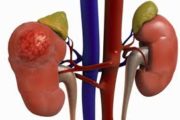Do Wi-Fi and mobile phones really cause cancer? Experts respond
Simon Chapman, University of Sydney; Darren Saunders, UNSW Australia; Rodney Croft, University of Wollongong, and Sarah Loughran, University of Wollongong
On 16th February, Catalyst aired an episode on the ABC titled “Wi-Fried”, hosted by Dr Maryanne Demasi, claiming that radiation from mobile phones and Wi-Fi may constitute a brain cancer risk.
We invited experts who have conducted research into this area to respond to the claims made in the programme.
Rodney Croft, University of Wollongong
Instead of science journalism, Catalyst aired a misleading program, which followed the views of a few individuals in arguing that radiofrequency emissions from wireless devices were harmful.
Although the program failed to disclose this, such views are not supported by science and should be taken merely as the personal views of some fringe scientists.
In fact, the scientific consensus is strong, and is that there is no substantiated evidence that the low levels of radiofrequency emissions encountered by mobile telecommunications can cause any harm.
For more details about the international scientific consensus on this issue you may find the website of the International Commission on Non-Ionising Radiation Protection (ICNIRP) of interest, or closer to home, that of the Australian Centre for Electromagnetic Bioeffects Research.
Professor Rodney Croft is Director of the National Health & Medical Research Council of Australia’s Centre for Research Excellence in Electromagnetic Energy, he is a current ICNIRP Commissioner, and Professor of Health Psychology at University of Wollongong.
Darren Saunders, University of NSW
It’s really disappointing to see the bastion of TV science in Australia approach a story in this way.
Scaremongering and pseudoscience have plenty of other outlets on TV, and there are so many amazing science stories to be told locally and internationally. There was very selective reporting of existing data and sensationalist headlines.
Catalyst has missed an opportunity to use this topic as a way to demonstrate scientific or critical thinking.
With so many scientists questioning the content and angle of stories like this, then it’s probably time for Catalyst to reflect on its approach.
The really frustrating aspect is that rebuttals and factchecks won’t undo the damage. There are very real public health effects of scaremongering like this, creating anxiety and fear.
The two main flaws in the argument that stand out scientifically are:
- The lack of any demonstrable increase in brain cancer incidence over time. We have been exposed to the same kind of non-ionising electromagnetic radiation long before mobile phones and Wi-Fi became commonplace, and
- The absence of a plausible biological mechanism for how this kind of radiation can cause cancer. There were very poor analogies made with microwave ovens and smoking, which are purely emotive and not based on actual science. Comparing a microwave to a mobile phone is like comparing a Saturn V rocket to your lawnmower.
Dr Darren Saunders is a cancer biologist at the University of NSW and visiting fellow at the Kinghorn Cancer Centre, Garvan Institute.
Sarah Loughran, University of Wollongong
The ABC’s Catalyst programme “Wi-Fried” asked the question of whether Wi-Fi and radiation from wireless devices could be affecting our health.
Unfortunately a very disappointing and inaccurate story was presented, with the underlying suggestion throughout the episode that exposure to the radiofrequency fields emitted by these devices is not safe.
Many claims were made without providing any substantiated science to support what was essentially individual and selective opinions that were used to paint an incorrect picture of the current state of knowledge.
Indeed there is currently no scientific evidence that exposure to low level radiofrequency, such as emitted by mobile phones and Wi-Fi, has an impact on health.
By not providing a balanced view of the science, Catalyst has left viewers with misleading messages related to the use of such devices, which may serve to perpetuate fear related to a health risk that currently does not exist.
Dr Sarah Loughran is a researcher at the National Health & Medical Research Council of Australia’s Centre for Research Excellence in Electromagnetic Energy. She is currently a member of the World Health Organisation (WHO) Environmental Health Criterion Evaluation Committee on Radiofrequency Fields, the scientific expert group of ICNIRP, and is on the board of directors for the Bioelectromagnetics Society.
Simon Chapman, University of Sydney
Dr Devra Davis, who was featured extensively in the Catalyst programme, asserted that it was too early to see any rise in brain cancer caused by mobile phones or Wi-Fi, and argued that brain cancers after the Japanese atomic bombs did not appear for 40 years. This is simply incorrect.
There is no evidence of any increase in the rate per 100,000 population of brain cancer in any age group in Australia from 1982 to the present, other than for the very oldest age group where the increase started well before mobile phones were introduced in Australia and so cannot be explained by mobile phones. All cancer in Australia is notifiable, and over 85% of brain cancer is histologically verified: it is not just a doctor’s opinion.
This paper also reports on central nervous system cancers (including brain cancers) in those exposed to atomic bomb radiation in Japan. This table from the paper shows those diagnosed before 1985 (i.e. before 40 years). You can see that there were 110/187 cases diagnosed in the first 40 years, i.e. 58.8%.

This table shows the incidence of a variety of cancers of those exposed to atomic bomb radiation over the years.
Cancer/DOI 10.1002/cncr.20543
And this quote from the methods shows that there were another 27 who died before 1958 from central nervous system cancers, i.e. within 13 years of the bombs.
We excluded 73 tumors in individuals who were not in Hiroshima or Nagasaki at the time of the bombings, 35 individuals who did not have available organ dose estimates, and 27 individuals who died or were diagnosed before January 1, 1958.
We have had mobiles in Australia since 1988. Some 90% of the population use them today and many of these have used them for a lot longer than 13 years, but we are seeing no rise in the incidence against the background rate.
Davis is arguing that we would see a sudden rise 40 years later. That is not what we see with cancer; we see gradual rises moving toward peak incidence, which can be as late as 30-40 years (as with lung cancer and smoking for example).

New cases of brain cancer in Australia, 1982 to 2011 (age-adjusted)
Australian Institute of Health and Welfare, CC BY
Simon Chapman is Emeritus Professor in Public Health at the University of Sydney
![]()
Simon Chapman, Emeritus Professor in Public Health, University of Sydney; Darren Saunders, Senior Lecturer in Medicine, UNSW Australia; Rodney Croft, Professor of Health Physiology, University of Wollongong, and Sarah Loughran, Research Fellow, University of Wollongong
This article was originally published on The Conversation. Read the original article.
Warning: file_get_contents(https://plusone.google.com/_/+1/fastbutton?url=https%3A%2F%2Fkigalihealth.com%2Fdo-wi-fi-and-mobile-phones-really-cause-cancer-experts-respond%2F): failed to open stream: HTTP request failed! HTTP/1.0 404 Not Found in /home/kigal4health/public_html/wp-content/themes/goodnews5/goodnews5/framework/functions/posts_share.php on line 151













